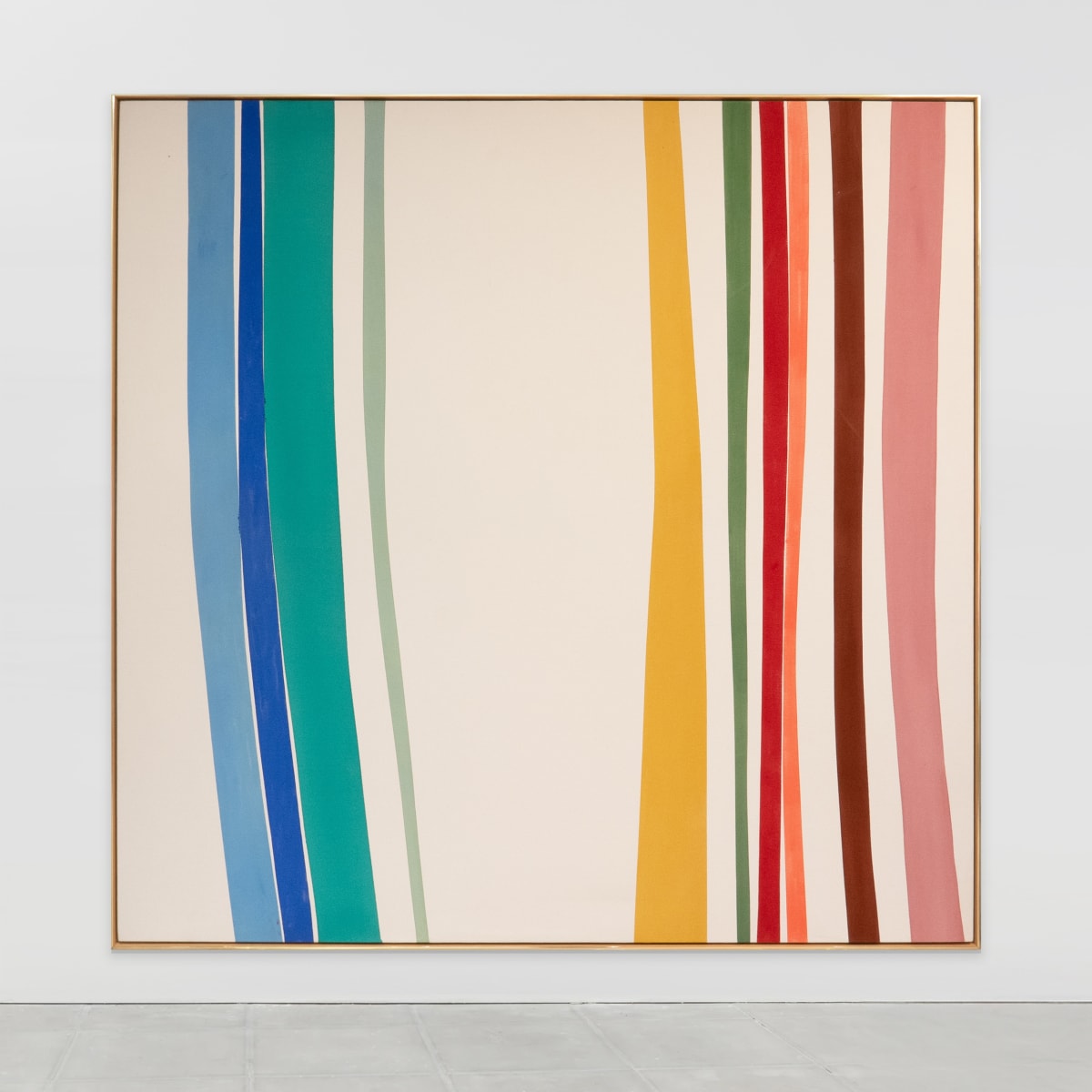American painter Stephen French (b. 1987) creates a compelling dialogue between contemporary pop culture and classical art historical references. With a background that includes a BA in Philosophy and Art History from Tulane University, French’s work draws heavily from a broad array of cultural and intellectual sources. His practice frequently incorporates imagery and motifs, often abstract and devoid of explicit subjects, that reflect his upbringing in the southern United States. These elements come together to form what French refers to as a ‘familiar abstraction,’ a term that evokes both a sense of nostalgia and intellectual curiosity.
French’s art engages with the tradition of appropriation, using familiar, often commonplace imagery from pop culture, consumerism, and everyday life as a means of inquiry. Rather than simply re-contextualizing images, he strips them down to their most basic, abstract forms, removing explicit reference points in order to explore their underlying emotional or psychological resonance. This approach is informed by the concept of “appropriation art,” a genre that interrogates the ways in which cultural symbols and visual language can be repurposed to reveal new layers of meaning. By taking symbols and objects that might otherwise be considered disposable or transient—such as logos, cartoon characters, or commonplace items—and reimagining them through abstraction, French challenges the viewer to consider their cultural significance in a more nuanced way.
His use of pop cultural references invites a layered conversation about how art can exist in a world saturated with images and mass-produced content. Rather than glorifying or fetishizing these images, French employs them as a kind of visual shorthand, creating an interplay between the ordinary and the extraordinary. His abstraction transforms these familiar objects into something unfamiliar, allowing viewers to experience them in a fresh context. This technique reflects a critical approach to the mass consumption of images in our media-saturated world, questioning what happens when popular symbols are removed from their intended commercial or narrative context.
The work of appropriation artists like French also builds upon a history of art that engages with re-contextualization and the questioning of authorship, such as the strategies used by figures like Marcel Duchamp, Andy Warhol, and more recently, artists like Sherrie Levine or Jeff Koons. French shares with these artists a desire to interrogate how culture and art intersect and evolve, blurring the boundaries between high and low art, the personal and the collective, the original and the copied.
His works are defined by their use of vibrant, bold colors and a deliberate, stark simplicity, focusing on a minimalist approach that heightens the emotional resonance of the viewer’s experience. Rather than representing specific, identifiable figures or scenes, French’s paintings engage with the viewer on a deeper, more intuitive level. The absence of obvious subjects allows for an open-ended interpretation, prompting personal memories, emotions, and associations to surface, fostering an intimate dialogue between the work and its observer.
By reducing visual clutter and stripping down to the most essential elements of color, form, and texture, French emphasizes the inherent power of these formal aspects in art. His practice is notably informed by formalist theories of art, particularly those espoused by influential critic Clement Greenberg in the 1960s, which emphasize the importance of medium-specific qualities such as color, composition, and materiality. This philosophical grounding underpins French’s approach to painting, where every choice—whether in color, form, or composition—serves to highlight the intrinsic qualities of the canvas itself.
-

Constructing a Popular Image
Basquiat, Warhol, Wesselman, & Oldenburg 14 Nov - 19 Dec 2024Pop Art and the American Tradition explores how the dynamic spirit of Pop Art has been reimagined and repurposed by artists across different eras, from the 1960s to today. Born in the mid-20th century, Pop Art revolutionized the art world by breaking down the boundaries between high culture and mass...






